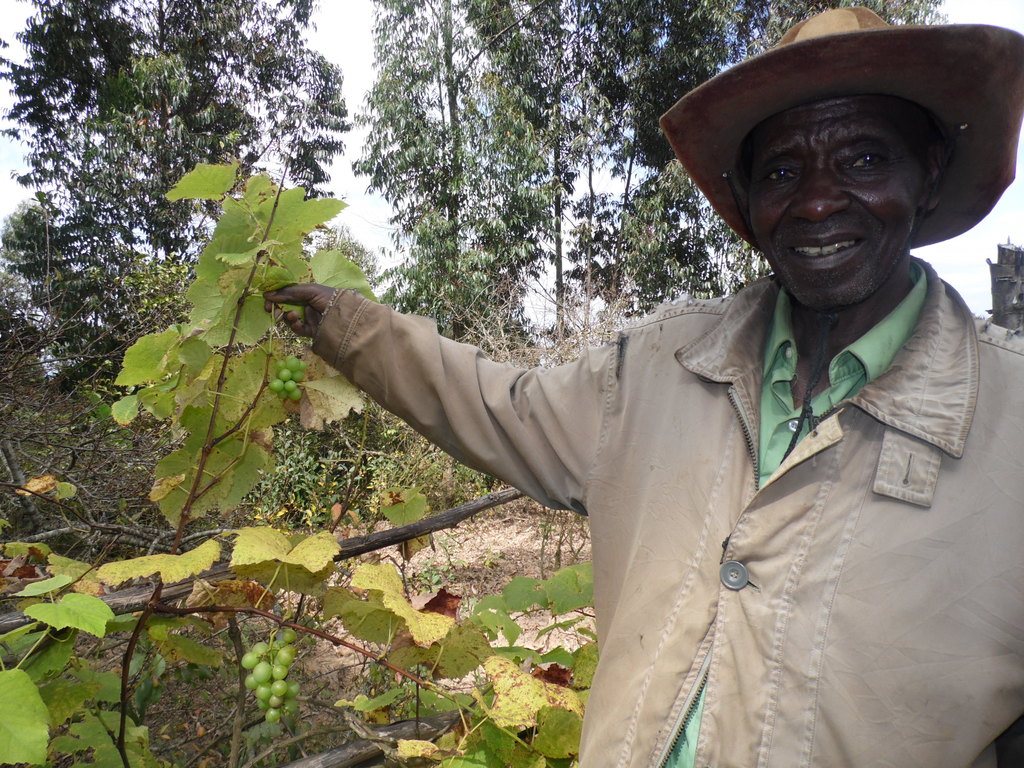Ugandan President Yoweri Museveni recently set up a grape farm after sourcing seedlings from Kenyan orchard management specialist Henry M’Tiiri, who sent out a batch of cultivars on the first weekend of December.
Mr. M’Tiiri who runs a fruit seedling nursery in Meru said he received a call from a Ministry of Agriculture official in Kenya to supply them with 600 seedlings.
“They had been contacted by Museveni’s farm manager who was looking for clean seedlings, and having been in the business for decades, I was selected to provide the clones,” M’Tiiri told Farmbiz Africa.
M’Tiiri, who also sells grafted fruit seedlings, delivered a mix of crimson seedless red and green grapes, and his plants adapted well, driving Museveni’s men to ask for a supply of 400 more cultivars.
Museveni's interest in grape farming and wine production started in the 1990s when he sponsored a Mbarara-based entrepreneur to study the cultivation of grapes in the Rhinelands Germany as a step towards boosting wine production in his the country.
Museveni paid for Silas Kamanyiro’s scholarship after he visited a flourishing grape farm and wine-processing plant he had set up.
Buy all you can
Grape seedlings are sold at Sh300 a piece and M’Tiiri, who has supply networks around the country, says that he does not have any specifications as to the minimum number of seedlings one can buy.
“Farmers buy the seedlings according to the number they need and I can arrange for delivery everywhere around the country,” he said.
-------------------------------------
For cloned grape, grafted apple, lemon, avocado, orange and mango seedling purchases and orchard management advice, farmers can call Henry M’Tiiri on phone number 0723992728
-----------------------------------
A QUICK GUIDE ON GROWING GRAPES
Climate
Farmers planning to grow grapes need to know that the plants generally do well in areas with hot and dry climates. They mostly prefer temperatures of between 15?C and 40?C .
Soil
While grapes tolerate a fairly wide range of soils, a pH of 5.5 – 7.0 is generally desirable.
Drainage is a vital component of grape cultivation-To test your soil, dig a hole (12”x12”x12”) hole and fill it with water. Let the water drain for a period of 30 minutes to one hour then refill water. If the water drains within 24 hours, then you have a soil that drains well enough to grow healthy grapevines.
Planting
During planting, it is important to note that grapevine roots grow 3-6 feet from the base of the plant. Therefore, allow a gap of 8 feet between individual plants.
Watering
Newly-planted grapes require immediate watering to cut down the risk of losing them to transplant stock. During the entire period of the first growing season, new vines should be watered at least weekly in the absence of rainfall. The water should be enough to wet the soil 6-10 inches beneath the surface (3-4 cups).
Fertilizing
The colour of leaves can tell you whether or not your vines are getting enough nutrients. Dark green leaves show that the plant is healthy. If the color appears to be fading, add fertilizer (store-bought or compost).
Supporting
As your plants start growing older, you need to build a trellis, which will help to support their natural desire to climb.
Pruning
If you let the vines continue to grow without pruning, they will produce little fruit. During the first growing season, trim most of the shoots leaving only three to grow. In subsequent growing cycles, prune back the branches that have already produced fruit.
Harvesting
The best way to find out if your grapes are ready for harvesting is to taste them. Ripe grapes should have a sweet taste, should be flavorful and mildly acidic.
PHOTO: Machakos County farmer Muia Kusenga inspects a green grape fruit at his 'Garden of Eden'. President Yoweri Museveni surprised kenyans when he bought grape seedlings from Meru to plant at his orchard. PHOTO BY LABAN ROBERT.

















Comments powered by CComment